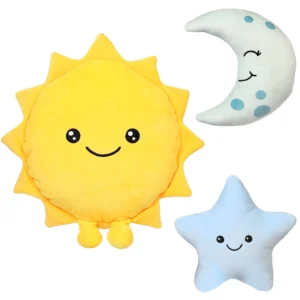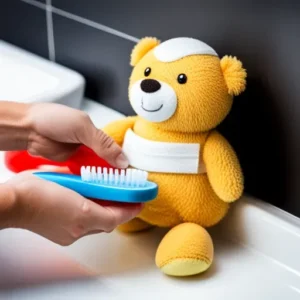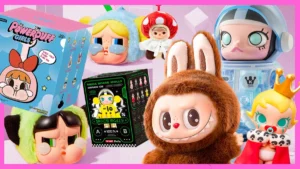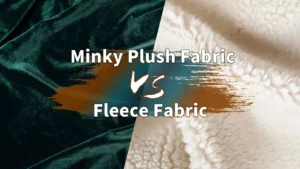Plush toys are more than just soft companions—they are cherished friends, comfort providers, and treasured collectibles. But what exactly makes a plush toy truly “good”? Is it the softness, the safety, or maybe the story behind its design? Whether you’re a parent searching for the perfect gift, a retailer aiming to stock high-quality products, or a manufacturer striving for excellence, understanding the key differences that define a great plush toy is essential.
A good plush toy combines premium, safe materials, thoughtful design, rigorous manufacturing, cultural relevance, and environmental responsibility to deliver durability, appeal, and comfort. These factors shape the toy’s value and user experience.
Imagine a child clutching a plush bear that not only feels irresistibly soft but also stays intact through years of hugs and adventures. This is the magic that happens when craftsmanship meets care. Ready to dive deeper into the world of plush toys and discover what sets the best apart? Let’s get started.
1. What materials are best for plush toys and why?

The best materials for plush toys are soft, durable, non-toxic fabrics like polyester velboa, minky, and eco-friendly cotton blends, chosen for their comfort, safety, and longevity.
Exploring Plush Toy Materials
- Which Fabrics Offer the Best Softness and Durability? Polyester velboa and minky are favorites due to their ultra-soft texture and resistance to wear. These synthetic fabrics withstand repeated washing and rough play. Natural fibers like cotton blends add breathability and are preferred for hypoallergenic needs, though sometimes less durable.
- How Do Eco-Friendly Materials Impact Quality and Safety? Sustainable materials such as organic cotton and recycled polyester are gaining traction. They reduce environmental impact but may vary in softness or cost. Choosing eco-friendly doesn’t mean compromising quality if the sourcing and processing are controlled well.
- Are There Differences Between Synthetic and Natural Fibers for Plush Toys? Synthetic fibers excel in color retention and moisture resistance, while natural fibers offer biodegradability and softness. Balancing these properties according to target users—like infants needing hypoallergenic fabrics—affects material choice.
Common Plush Toy Fabrics Comparison
| Fabric Type | Softness | Durability | Safety | Eco-Friendliness | Cost |
|---|---|---|---|---|---|
| Polyester Velboa | Very High | High | Non-toxic, safe | Moderate | Moderate |
| Minky | Very High | High | Non-toxic | Low | Higher |
| Organic Cotton | Moderate | Moderate | Hypoallergenic | High | High |
| Recycled Polyester | High | High | Non-toxic | Very High | Moderate |
2. How does the design influence the appeal and functionality of plush toys?

Design influences plush toys’ appeal by enhancing visual charm, tactile comfort, and safety, while enabling customization for diverse markets and age groups.
The Power of Design in Plush Toys
- What Design Features Enhance Playability and Safety? Rounded edges, securely stitched seams, and embroidered eyes prevent choking hazards. Soft stuffing and flexible limbs encourage cuddling and imaginative play, improving overall functionality.
- Which Styles Attract Different Age Groups and Markets? Toddlers prefer simple, colorful shapes, while collectors seek detailed, limited-edition designs. Market trends like cartoon characters or realistic animals also drive design choices.
- How Important is Customization for Personalized Plush Toys? Customization allows brands to target niche markets with unique themes or logos. Personalized toys foster emotional attachment and stand out in competitive retail environments.
Design Features for Safety
| Feature | Purpose | Impact |
|---|---|---|
| Embroidered Details | Avoids loose parts | Child safety |
| Double Stitching | Strengthens seams | Durability |
| Hypoallergenic Fill | Reduces allergies | Health safety |
| Washable Fabrics | Easy cleaning | Longevity & hygiene |
3. What manufacturing processes affect plush toy quality?
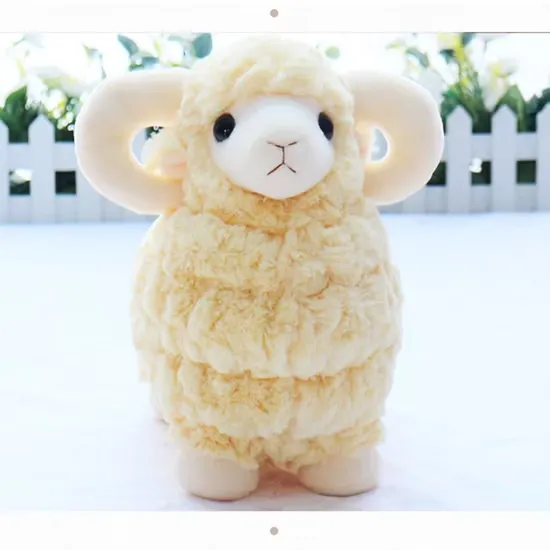
Manufacturing quality hinges on precise stitching, premium filling materials, compliance with safety standards, and strict quality control protocols.
Manufacturing and Quality Assurance
- How Does Stitching and Filling Material Choice Impact Durability? Tight, even stitches prevent seam splits; high-quality polyester fiberfill keeps the toy fluffy over time. Poor stitching and cheap fillers cause deformation and safety risks.
- Are Safety Standards and Certifications Crucial for Product Trust? Certifications like ASTM F963, EN71, and CPSIA ensure toys meet international safety benchmarks. Compliance builds retailer and consumer confidence, reducing liability.
- Which Quality Control Measures Are Essential During Production? Regular inspections, tensile tests on seams, chemical testing for toxins, and batch sampling catch defects early, maintaining consistent quality.
Plush Toy Manufacturing Checklist
| Step | Key Focus | Quality Impact |
|---|---|---|
| Fabric Inspection | Defect-free materials | Appearance & durability |
| Stitching | Seam strength and uniformity | Longevity & safety |
| Filling Insertion | Even and sufficient stuffing | Comfort & shape retention |
| Safety Testing | Compliance with regulations | Market access & consumer trust |
| Final Inspection | Overall finish and defects check | Product consistency |
4. Do plush toys vary significantly by region or culture?

Yes, plush toys vary widely by region and culture, reflecting local preferences, safety regulations, and popular themes that influence design and sales.
Regional and Cultural Variations
- What Regional Preferences Influence Plush Toy Shapes and Themes? Asian markets favor kawaii-style cute characters and anime themes; North America prefers classic teddy bears and popular media tie-ins; Europe often blends traditional and modern designs.
- Are There Cultural Safety Regulations Manufacturers Must Follow? Yes, regulations differ: EU’s EN71 is stricter on chemicals, while the US CPSIA mandates testing for lead and phthalates. Understanding these is vital for global distribution.
- How Do Market Trends in Asia, Europe, and America Differ for Plush Toys? Asia’s fast fashion trends drive frequent style updates; Europe focuses on sustainability and heritage brands; America balances mass-market appeal with licensed character toys. Question Region / Aspect Description What Regional Preferences Influence Plush Toy Shapes and Themes? Asia Favor kawaii-style cute characters and anime themes North America Prefer classic teddy bears and popular media tie-ins Europe Blend traditional and modern designs Are There Cultural Safety Regulations Manufacturers Must Follow? EU EN71 standard is stricter on chemicals US CPSIA mandates testing for lead and phthalates Global Distribution Understanding regional regulations is vital for market access How Do Market Trends in Asia, Europe, and America Differ for Plush Toys? Asia Fast fashion trends drive frequent style updates Europe Focus on sustainability and heritage brands America Balance mass-market appeal with licensed character toys
| Question | Region / Aspect | Description |
|---|---|---|
| What Regional Preferences Influence Plush Toy Shapes and Themes? | Asia | Favor kawaii-style cute characters and anime themes |
| North America | Prefer classic teddy bears and popular media tie-ins | |
| Europe | Blend traditional and modern designs | |
| Are There Cultural Safety Regulations Manufacturers Must Follow? | EU | EN71 standard is stricter on chemicals |
| US | CPSIA mandates testing for lead and phthalates | |
| Global Distribution | Understanding regional regulations is vital for market access | |
| How Do Market Trends in Asia, Europe, and America Differ for Plush Toys? | Asia | Fast fashion trends drive frequent style updates |
| Europe | Focus on sustainability and heritage brands | |
| America | Balance mass-market appeal with licensed character toys |
5. How can manufacturers ensure plush toys meet environmental and safety standards?

Manufacturers can meet standards by adopting sustainable materials, conducting thorough safety testing, and adhering to global environmental regulations.
Meeting Standards in Plush Toy Production
- What Sustainable Practices Are Becoming Industry Standards? Using organic or recycled fabrics, reducing water usage in dyeing, and employing eco-friendly packaging demonstrate commitment to sustainability.
- Which Testing Methods Verify Non-Toxicity and Hypoallergenic Properties? Laboratory chemical analyses, allergen testing, and regular audits confirm products are safe for children and environmentally compliant.
- Are Biodegradable or Recycled Materials Viable Options Without Compromising Quality? Innovations have made recycled polyester and bio-based fibers competitive in softness and durability, though cost and supply chain maturity remain challenges. Question Key Points Description What Sustainable Practices Are Becoming Industry Standards? Use of organic or recycled fabrics Reducing water usage in dyeing and employing eco-friendly packaging to enhance sustainability Which Testing Methods Verify Non-Toxicity and Hypoallergenic Properties? Laboratory chemical analyses and allergen testing Regular audits ensure products are safe for children and comply with environmental standards Are Biodegradable or Recycled Materials Viable Options Without Compromising Quality? Recycled polyester and bio-based fibers Competitive softness and durability, but cost and supply chain maturity remain challenges
| Question | Key Points | Description |
|---|---|---|
| What Sustainable Practices Are Becoming Industry Standards? | Use of organic or recycled fabrics | Reducing water usage in dyeing and employing eco-friendly packaging to enhance sustainability |
| Which Testing Methods Verify Non-Toxicity and Hypoallergenic Properties? | Laboratory chemical analyses and allergen testing | Regular audits ensure products are safe for children and comply with environmental standards |
| Are Biodegradable or Recycled Materials Viable Options Without Compromising Quality? | Recycled polyester and bio-based fibers | Competitive softness and durability, but cost and supply chain maturity remain challenges |
6. What are the key factors buyers consider when choosing plush toys?
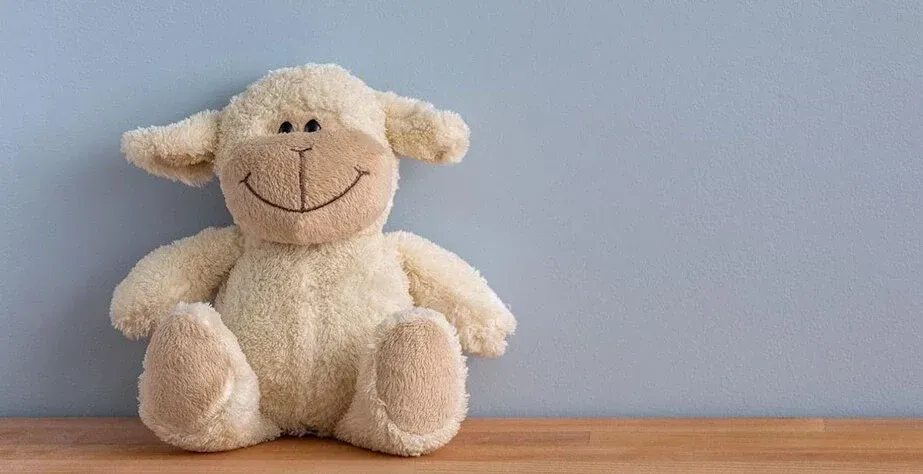
Buyers prioritize durability, safety, design appeal, price, and brand reputation, with packaging and product information influencing trust and purchase decisions.
Understanding Buyer Priorities
- Is Durability or Aesthetic Appeal More Valued? Parents often prioritize durability and safety, while collectors and gift buyers emphasize aesthetics and uniqueness.
- How Do Pricing and Brand Reputation Influence Purchasing Decisions? Competitive pricing attracts budget-conscious buyers; established brands reassure quality and reliability.
- What Role Does Packaging and Product Information Play in Buyer Trust? Clear labeling about materials, safety certifications, and care instructions increases consumer confidence and reduces return rates. Question Buyer Consideration Description Is Durability or Aesthetic Appeal More Valued? Durability vs. Aesthetics Parents focus on durability and safety; collectors and gift buyers prioritize aesthetics and uniqueness How Do Pricing and Brand Reputation Influence Purchasing Decisions? Pricing and Brand Reputation Competitive pricing attracts budget buyers; strong brands assure quality and reliability What Role Does Packaging and Product Information Play in Buyer Trust? Packaging and Product Information Clear labels on materials, certifications, and care boost consumer confidence and lower returns
| Question | Buyer Consideration | Description |
|---|---|---|
| Is Durability or Aesthetic Appeal More Valued? | Durability vs. Aesthetics | Parents focus on durability and safety; collectors and gift buyers prioritize aesthetics and uniqueness |
| How Do Pricing and Brand Reputation Influence Purchasing Decisions? | Pricing and Brand Reputation | Competitive pricing attracts budget buyers; strong brands assure quality and reliability |
| What Role Does Packaging and Product Information Play in Buyer Trust? | Packaging and Product Information | Clear labels on materials, certifications, and care boost consumer confidence and lower returns |
Conclusion
Choosing or making a good plush toy involves a careful balance of premium materials, thoughtful design, stringent manufacturing, cultural insight, and sustainable practices. As a professional plush toy factory, Kinwin stands ready to partner with you to customize and produce plush toys that delight customers worldwide while upholding the highest quality and environmental standards.
Ready to bring your plush toy ideas to life? Contact Kinwin today for a personalized inquiry and let’s create plush toys that make lasting impressions.




